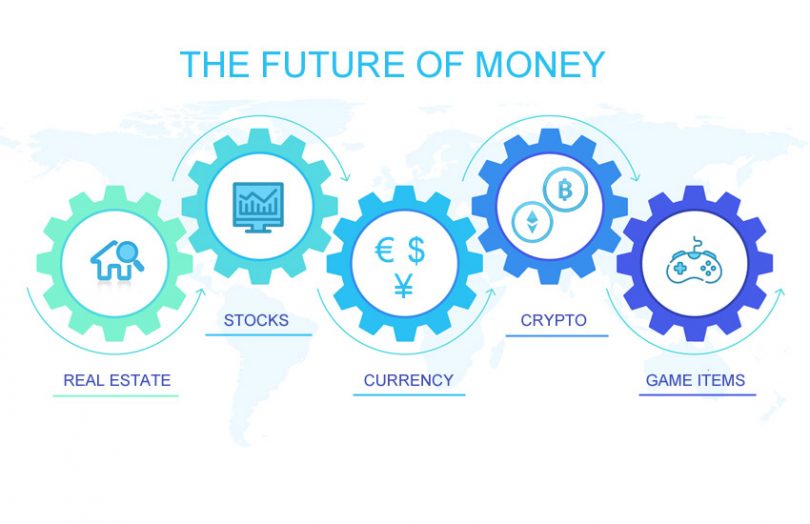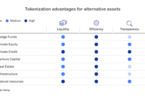There’s a narrative amongst the crypto crowd that only cryptocurrencies will be used for payments in the future. While this may be wishful thinking, the future of money is undoubtedly going to be disrupted.
But that disruption is more about the removal of frictions enabled through technology than the technology itself.
As context, Piyush Gupta, the CEO of DBS Bank, made comments about blockchain and web 3.0 at this month’s Singapore Fintech Festival. He said that currently, DBS is using the basic functionality of blockchains which give tremendous efficiencies. But he also described a “level three” future that the “idealist libertarians” envisage.
In that vision, “You don’t need intermediaries. You don’t need institutions. You don’t need hubs. Contracts, tokens, smart contracts will make everything work. The problem with (web) 3.0 when you take that to level three, if you take that argument to the next phase, it’s not just you don’t need the intermediaries. You start questioning: you don’t need a central bank. You don’t need regulators. And by the way, guess what, you don’t need nation states, you don’t need governments,” said Gupta.
He continued, “This is not a question of technology. This is now a question of social politics and a question of philosophy.” This level three is not what he envisages. Instead, he sees an intermediate level.
That’s the big picture. However, without entirely doing away with intermediaries or regulators, some degree of the socio-political issues in that level three scenario are likely to arise.
It’s best demonstrated by moving from the big picture to practicality.
Where we are today
Today if you hold cryptocurrencies at a major exchange, you can get a Visa or Mastercard that lets you spend the crypto to buy a cup of coffee. It’s not really magic. When you make a purchase, the cryptocurrency exchange converts the crypto into dollars at the point of payment.
But that simple example is a roadmap for the future. Because what’s happening is the crypto exchange is removing friction which means you don’t have to use conventional money to pay for goods.
Think back to the history of barter. The problem was if you had apples and the other person had oranges, but you didn’t want oranges, there was no trade. That was a key reason why you needed currency. In this case, you have a cryptocurrency rather than cash, and the retailer wants cash. But it’s not a problem. In a digital world, someone is on hand to take the oranges and give you whatever you want instead.
Fast forward to a future where stocks, bonds, your in-game assets and the equity in your home are all digital tokens. You will hold all your assets in a single interoperable wallet. If a tiny fraction of the Apple stock in your portfolio can be converted in real-time, why not use that to make your coffee payment? The merchant doesn’t care because they receive dollars if they want.
When that friction of price conversion and selling assets goes away, how much money do you need to hold in a bank account? For that matter, how much do you need to keep in a central bank digital currency (CBDC) or stablecoin? Wouldn’t you rather keep your money in revenue earning assets?
Asset prices aren’t stable
In this digital future, you’d still want to keep some cash to pay for rent and the like because asset prices fluctuate. Right? Perhaps, but not necessarily. It’s a matter of managing risk.
Institutions are in a similar boat because they like to ensure that interest rates and foreign exchange costs are predictable. So they buy futures and options to ensure stability. These derivatives markets are massive. The total global market value of stocks at the end of June 2021 was $116 trillion. But the notional value of unlisted options and futures amounted to $610 trillion.
In the crypto world, you can instantly buy futures and options for a variety of assets. Many offerings sidestep regulations and are risky. However, it demonstrates that hedging and derivatives could move from being a tool for institutions and sophisticated investors to being available to the average person if that’s allowed.
When you buy some fries, you’re offered one or two sachets of ketchup. Much in the same way, when you buy a stock or other asset, you could be asked whether you want to manage price stability to a significant or medium extent. Artificial Intelligence can guide the less knowledgeable and also figure out whether you are hedging or gambling. That’s because the gambling use of derivatives may not be allowed for consumers in some countries.
So, with the combination of wallets, instant trading, and hedging, the consumer appetite for ‘money’ might decline over time. But what about companies?
Corporates are not the same
It’s true that corporates might have more of a need for cash simply because they have to pay staff and goods and services. But one of the promises of blockchain and digital money is that their need will also decline.
Today corporates keep cash balances around the world to address local needs, in part because of the frictions in moving money around the world. As those frictions are removed and intraday cash management becomes more automated, there will be fewer pockets of money and overall, their cash requirements will also be significantly lower.
The frictions being removed
So at a practical level, digitization helps to remove several frictions. Currently, assets are siloed in different markets and institutions. As assets become digital tokens, they all start to be integrated into single wallets meaning that either the silos are broken or become interoperable.
In the future, an instant price and transaction could be available for most, if not all, assets. In a similar way to the cryptocurrency card payment example, you can already convert some in-game assets and rewards points instantly to money. And in future, you’ll be able to do the same for public stocks, bonds and other assets. But probably not everything. An instant willing buyer for an obscure private stock or a share of an esoteric art item might happen more often than before but could remain tricky.
And finally, hedging can be made available instantly and automatically. When that hedging is no longer needed when you spend the asset, it can be unwound in a similar manner.
This combination of wallets, standardized tokenized assets, liquid markets and hedging could radically reduce the extent to which consumers and companies desire to hold cash, whether that money is held at banks, in stablecoins or central bank digital currencies.
In other words, it doesn’t just impact commercial banks. It also impacts central banks and national economies. And it raises some of those socio-political issues that the DBS CEO mentioned, albeit on a smaller scale. Those impacts will be explored in the next piece.







